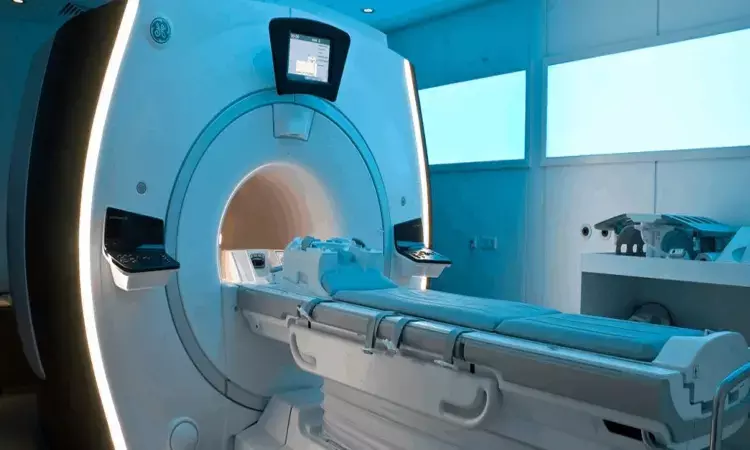- Home
- Medical news & Guidelines
- Anesthesiology
- Cardiology and CTVS
- Critical Care
- Dentistry
- Dermatology
- Diabetes and Endocrinology
- ENT
- Gastroenterology
- Medicine
- Nephrology
- Neurology
- Obstretics-Gynaecology
- Oncology
- Ophthalmology
- Orthopaedics
- Pediatrics-Neonatology
- Psychiatry
- Pulmonology
- Radiology
- Surgery
- Urology
- Laboratory Medicine
- Diet
- Nursing
- Paramedical
- Physiotherapy
- Health news
- Fact Check
- Bone Health Fact Check
- Brain Health Fact Check
- Cancer Related Fact Check
- Child Care Fact Check
- Dental and oral health fact check
- Diabetes and metabolic health fact check
- Diet and Nutrition Fact Check
- Eye and ENT Care Fact Check
- Fitness fact check
- Gut health fact check
- Heart health fact check
- Kidney health fact check
- Medical education fact check
- Men's health fact check
- Respiratory fact check
- Skin and hair care fact check
- Vaccine and Immunization fact check
- Women's health fact check
- AYUSH
- State News
- Andaman and Nicobar Islands
- Andhra Pradesh
- Arunachal Pradesh
- Assam
- Bihar
- Chandigarh
- Chattisgarh
- Dadra and Nagar Haveli
- Daman and Diu
- Delhi
- Goa
- Gujarat
- Haryana
- Himachal Pradesh
- Jammu & Kashmir
- Jharkhand
- Karnataka
- Kerala
- Ladakh
- Lakshadweep
- Madhya Pradesh
- Maharashtra
- Manipur
- Meghalaya
- Mizoram
- Nagaland
- Odisha
- Puducherry
- Punjab
- Rajasthan
- Sikkim
- Tamil Nadu
- Telangana
- Tripura
- Uttar Pradesh
- Uttrakhand
- West Bengal
- Medical Education
- Industry
Variance between multiparametric MRI and targeted biopsies tied to faulty risk stratification in prostate cancer: Study

Prostate multiparametric magnetic resonance imaging (MRI) is a cornerstone of international guidelines on prostate cancer detection and risk stratification. Upfront MRI focuses attention on a region of interest (ROI) that image-guided biopsies (IGBs) characterize with precision. Any discordance between MRI and fusion biopsies may result in inadequate risk stratification that may be redressed by software-registration IGBs.
Recent study reports published in European Urology Oncology have highlighted that discordant findings between multiparametric magnetic resonance imaging (mpMRI) and transrectal image-guided biopsies of the prostate (TRUS-P) may result in inadequate risk stratification of localized prostate cancer.
In the study,researchers aimed to assess transperineal image-guided biopsies of the index target (TPER-IT) in terms of disease reclassification and treatment recommendations.For the study design, cases referred for suspicion or treatment of localized prostate cancer were reviewed in a multidisciplinary setting, and discordance was characterized into three scenarios: type I—negative biopsies or International Society of Urological Pathology (ISUP) grade 1 cancer in Prostate Imaging Reporting and Data System (PI-RADS) ≥4 index target (IT); type II—negative biopsies or ISUP grade 1 cancer in anterior IT; and type III—<3 mm stretch of cancer in PI-RADS ≥3 IT. Discordant findings were characterized in 132/558 (23.7%) patients after TRUS-P. Of these patients, 102 received reassessment TPER-IT.
The primary objective was to report changes in treatment recommendations after TPER-IT. Therefore, cores obtained by primary TRUS-P and TPER-IT were analyzed in terms of cancer detection, ISUP grade, and Cambridge Prognostic Group classification using descriptive statistics.
Results put forth some interesting facts.
- TPER-IT biopsies that consisted of fewer cores than the initial TRUS-P (seven vs 14, p < 0.0001) resulted in more cancer tissue materials for analysis (56 vs 42.5 mm, p = 0.0003).
- As a result, 40% of patients initially considered for follow-up (12/30) and 49% for active surveillance (30/61) were reassigned after TPER-IT to surgery or intensity-modulated radiotherapy.
"Nonconcordance between pathology and imaging was observed in a significant proportion of patients receiving TRUS-P. TPER-IT better informed the presence and grade of cancer, resulting in a significant impact on treatment recommendations. A multidisciplinary review of mpMRI and TRUS-P findings and reassessment TPER-IT in type I–II discordances is recommended." the team opined.
Observing the results, the research team concluded that , "In this report, patients with suspicious imaging of the prostate, but no or well-differentiated cancer on transrectal image-guided -biopsies, were offered transperineal image-guided biopsies for reassessment. We found that a large share of these had a more aggressive cancer than initially suspected. We conclude that discordant results warrant reassessment transperineal image-guided biopsies as these may impact disease risk classification and treatment recommendations."
For full article follow the link: https://doi.org/10.1016/j.euo.2021.06.001
Source: European Urology Oncology
Dr Satabdi Saha (BDS, MDS) is a practicing pediatric dentist with a keen interest in new medical researches and updates. She has completed her BDS from North Bengal Dental College ,Darjeeling. Then she went on to secure an ALL INDIA NEET PG rank and completed her MDS from the first dental college in the country – Dr R. Ahmed Dental College and Hospital. She is currently attached to The Marwari Relief Society Hospital as a consultant along with private practice of 2 years. She has published scientific papers in national and international journals. Her strong passion of sharing knowledge with the medical fraternity has motivated her to be a part of Medical Dialogues.
Dr Kamal Kant Kohli-MBBS, DTCD- a chest specialist with more than 30 years of practice and a flair for writing clinical articles, Dr Kamal Kant Kohli joined Medical Dialogues as a Chief Editor of Medical News. Besides writing articles, as an editor, he proofreads and verifies all the medical content published on Medical Dialogues including those coming from journals, studies,medical conferences,guidelines etc. Email: drkohli@medicaldialogues.in. Contact no. 011-43720751


